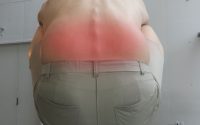The Role of A-Fiber Afferents in Perceiving Pleasantness of Touch
Gentle stroking of the skin is a common social touch behavior that elicits positive affective responses. The preference for slow versus fast stroking of hairy skin has been linked to the activation of unmyelinated C-tactile (CT) somatosensory afferents, which strongly correlate with touch pleasantness. The CT pathway has been recognized as a key sensory pathway for social-affective touch. However, recent studies in patients with cancer pain suggested that the integration of afferent A-fibers, along with CT fibers, might play a role in the perception of touch pleasantness. This article explores the contribution of mechanoreceptive A-fibers to touch perception and pleasantness.
The Role of A-Fiber Afferents in Touch Perception: To investigate the impact of mechanoreceptive A-fibers on touch perception, a single-blinded study was conducted involving healthy adults. Two types of peripheral nerve blocks were administered to temporarily eliminate the function of A-fiber afferents. The study aimed to examine the perceived intensity and pleasantness of gentle stroking and deep pressure, which are forms of social-affective touch targeted by CT fibers.
Findings: The study revealed that when the function of A-fiber afferents was significantly diminished, the perceived intensity and pleasantness of both gentle stroking and deep pressure were nearly abolished. These findings suggest that explicit perception of the pleasantness associated with CT-targeted brushing and pressure critically depends on afferent A-fibers. Therefore, social touch experiences mediated solely by the CT pathway may not be the complete picture.
Implications: This study sheds light on the complex nature of touch perception and pleasantness. While the CT pathway has been regarded as the primary pathway for conveying pleasant touch, the involvement of mechanoreceptive A-fibers cannot be disregarded. The integration of A-fiber inputs, along with CT fibers, seems to play a crucial role in shaping our perception of touch pleasantness. Understanding these underlying mechanisms can enhance our knowledge of the intricate neural processes involved in social touch.
Conclusion: The findings of this study highlight the significant contribution of mechanoreceptive A-fiber afferents to the explicit perception of touch pleasantness, particularly in the context of social touch. By temporarily eliminating the function of A-fibers, researchers demonstrated that the perceived intensity and pleasantness of gentle stroking and deep pressure were greatly diminished. These results challenge the notion that social touch experiences are solely mediated by the CT pathway. Further research in this area will help unravel the intricate interplay between different somatosensory pathways and their impact on touch perception, ultimately enhancing our understanding of the profound effects of social touch on human well-being.

